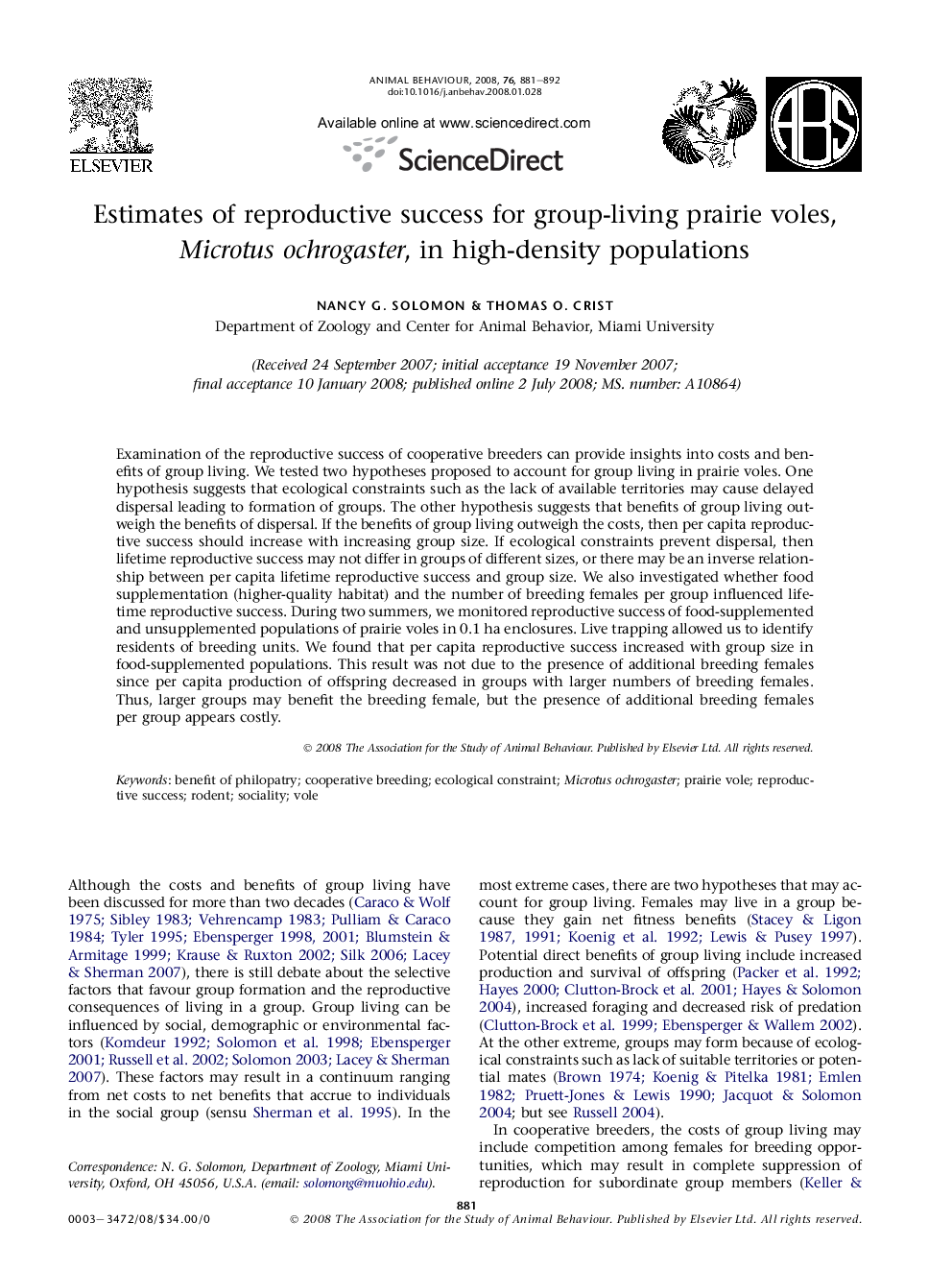| Article ID | Journal | Published Year | Pages | File Type |
|---|---|---|---|---|
| 2418833 | Animal Behaviour | 2008 | 12 Pages |
Examination of the reproductive success of cooperative breeders can provide insights into costs and benefits of group living. We tested two hypotheses proposed to account for group living in prairie voles. One hypothesis suggests that ecological constraints such as the lack of available territories may cause delayed dispersal leading to formation of groups. The other hypothesis suggests that benefits of group living outweigh the benefits of dispersal. If the benefits of group living outweigh the costs, then per capita reproductive success should increase with increasing group size. If ecological constraints prevent dispersal, then lifetime reproductive success may not differ in groups of different sizes, or there may be an inverse relationship between per capita lifetime reproductive success and group size. We also investigated whether food supplementation (higher-quality habitat) and the number of breeding females per group influenced lifetime reproductive success. During two summers, we monitored reproductive success of food-supplemented and unsupplemented populations of prairie voles in 0.1 ha enclosures. Live trapping allowed us to identify residents of breeding units. We found that per capita reproductive success increased with group size in food-supplemented populations. This result was not due to the presence of additional breeding females since per capita production of offspring decreased in groups with larger numbers of breeding females. Thus, larger groups may benefit the breeding female, but the presence of additional breeding females per group appears costly.
